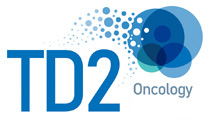New Cytometric Horizons using Spectral Flow Cytometry

Flow Cytometry is best known for its use in the research or clinical setting to monitor disease and treatment progression, and to study immune system interactions. However, flow cytometry is also a vital tool used by the pharmaceutical industry for drug development, clinical trials, and biologics manufacturing. As new treatments are developed for old and emerging diseases, methods to determine which therapies are effective need to evolve and change. It is beneficial to note the exciting improvements used in flow cytometry today.
Where cytometry has been, and where we are going
After the introduction of the first flow cytometer in the late 1960s, continuous evolution and improvements have been made. Recent technological advances in high parameter analysis provides more robust cellular measurements and greater understanding of immune system interactions. This allows for more efficient usage of sample which is imperative in clinical trials as well as in studies using rodent models, where sample volumes are limited.
In conventional flow cytometry, fluorophore labeled cells are introduced to a flow cell where they encounter one or more lasers. This results in excitation of the fluorophore which is then measured by detector(s).
An example of analysis using a single fluorophore is documented in this study demonstrating the blockage of endotoxin receptors by addition of detergent (Tyloxapol) in a macrophage cell line (RAW 264.7) treated with LPS-E. coli.(1) Here, the major hypothesis was answered, however perhaps more information could have been gained with the use of additional markers.

Figure 1. Taken from Serikov, et al., 2004. Representative FACS histograms of FITC-Lipopolysaccharide (LPS) binding to RAW 264.7 cells. (A) Dot histogram with gates used for the assessment of fluorescence. (B) Grey: control cells (no FITC-LPS added), black: cells incubated with 1 µg/mL FITC-LPS. (C) Binding of FITC-LPS was blocked by abundance of nonlabeled LPS. Dashed line: control cells (no LPS-FITC), solid line: nonlabeled LPS 300 µg/mL, FITC-LPS 1 µg/mL. (D) Polymixin B blocks binding of FITC-LPS to RAWs. Dashed line: no FITC-LPS; solid line: FITC-LPS 3 µg/mL, Polymixin B50µg/mL
The advancement from single to four color analysis was integral to progress in clinical laboratories. This advancement allowed for the addition of CD45 and CD3 for the detection of the major T lymphocyte subsets (total T cells, CD4, and CD8 T cells). This was critical during the AIDS epidemic to track the health status of HIV-infected individuals as loss of CD4 T cells is the cause of the acquired immunodeficiency that allows for common diseases to wreak havoc on these individuals.(2) An example of added complexity, this study uses several markers (4 parameters) in order to explore phenotypic changes (immunophenotyping) in disease progression.(3) In research such as this, more tubes are needed in order to separate markers using the same colors (FITC here), resulting in a need for more cells per tube and consequently, more sample volume.

Fig 2. Taken from Leite, et al., 2012 Four-color flow cytometry of fresh bone marrow cells showing myeloma cells expressing CD38, CD138, CD19, CD20, CD22, CD33, CD28, CD117, HLA-DR but no CD56 or CD4510.5581/1516-8484.20120019.
As more markers are added to a study, an expanse of fluorophores must be used. Color emissions from multiple conjugates on the same cell often overlap, creating the need for compensation or subtraction of the overlapping color spectra. This process can be meticulous, costly and time consuming. This can also create margins for error between instruments and laboratories illustrated in the following study demonstrating the variability between several laboratories in Switzerland using 8 color instrumentation (4). This experiment was completed by 8 laboratories in three rounds. Compensation errors were detected in all three study rounds resulting in inconsistent median fluorescence intensity. These experiments needed to be repeated to obtain data within set quality controls.

Fig.3 Taken from Glier, et al., 2017. Lymphocytes were selected upon eliminating doublets, debris, and non-leukocytic (CD45-negative) cells (upper row). Lymphocytes were gated as CD45-positive and SSClow events in CD45 vs. SSC dot plot. Lymphocyte subpopulations were identified using relevant markers: CD19-positive B-cells represented in dark green were divided into IgL-positive (pink) and IgK-positive (light green) subpopulations. CD3-positive T-cells (blue) were divided into CD8-positive (dark blue) and CD4-positive (orange). NK-cells (light blue) were identified as CD3/CD19-double negative and CD56-positive events and the CD56-bright subpopulation of NK-cells was gated for analysis. This gating strategy was repeated between labs and CV was calculated.
Spectral Flow Cytometry
Compensating for spectral overlap in conventional flow cytometry can lead to loss of signal resolution. Spectral flow cytometry captures the full spectral emission of all fluorophores used. This helps eliminate increased background and decreased signal resolution, which can be a problem with compensation in traditional flow methods
Some advantages of spectral cytometry in our FACS Services are:
- Less complicated machinery (no need for large numbers of detectors) This can reduce size and cost
- Many fluorophores can be used together, not limited by filters and detectors
- Fluorochromes with overlapping emission can be used on co-expressed markers
- Universal settings can be designed to optimize experiments across instruments
- Panels with more markers results in less sample and reagents used resulting in more data for less money
We hope that you are as excited as we are about the capabilities of spectral flow cytometry. Stay tuned for additional details about spectral flow fundamentals and the cutting-edge technology our two new Cytek Auroras can provide.
FCSL is a contract flow cytometry lab that routinely runs standard and custom flow cytometry panels supporting basic research, non-clinical and clinical studies. We are experts in fit-for-purpose flow cytometry assays, immunophenotyping of lymphocyte subsets, receptor occupancy assays (ROA), and flow cytometry panel design as well as the inclusion of proprietary markers into established flow cytometry panels. If your research involves immune monitoring using high complexity antibody panels, contact us to find out how our spectral flow cytometry services can support your program.
References
- Serikov VB, Glazanova T V, Jerome EH, Fleming NW, Higashimori H, Staub NC. Tyloxapol attenuates the pathologic effects of endotoxin in rabbits and mortality following cecal ligation and puncture in rats by blockade of endotoxin receptor-ligand interactions. Inflammation 2003;27:175—190. Available at: https://doi.org/10.1023/a:1025108207661.
- Mitra-Kaushik S, Mehta-Damani A, Stewart JJ, Green C, Litwin V, Gonneau C. The Evolution of Single-Cell Analysis and Utility in Drug Development. AAPS J. 2021;23.
- Leite LAC, Kerbauy DMB, Kimura E, Yamamoto M. Multiples aberrant phenotypes in multiple myeloma patient expressing CD56 -, CD28 +,CD19 +. Rev. Bras. Hematol. Hemoter. 2012;34:66–67.
- Glier H, Heijnen I, Hauwel M, Dirks J, Quarroz S, Lehmann T, Rovo A, Arn K, Matthes T, Hogan C, Keller P, Dudkiewicz E, Stüssi G, Fernandez P. Standardization of 8-color flow cytometry across different flow cytometer instruments: A feasibility study in clinical laboratories in Switzerland. J. Immunol. Methods 2019;475.

